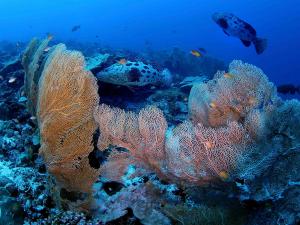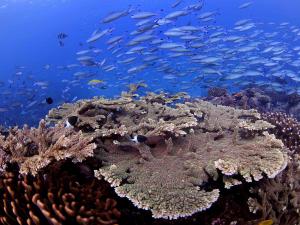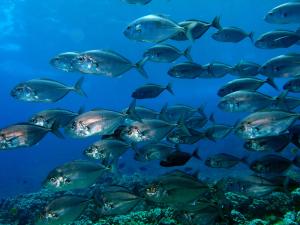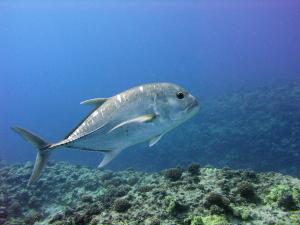Marine expert says more, larger protected areas needed in Hawaiʻi
University of Hawaiʻi at Mānoa
Aldabra Group Marine National Park in the Seychelles off East Africa. (Photo credit: Manu San Felix)

Aldabra Group Marine National Park in the Seychelles off East Africa. (Photo credit: Manu San Felix)
Marine protected areas (MPAs) are locations designed to protect the oceans’ valuable resources. New guidelines co-authored by a University of Hawaiʻi at Mānoa expert aim to assist stewards of the world’s oceans, including in Hawaiʻi, with establishing and maintaining effective MPAs.
There are nearly 18,000 MPAs reported to the World Database of Protected Areas. However, experts say very few MPAs achieve their desired conservation outcomes due to weak regulations, lack of enforcement or monitoring, and/or poor alignment of jurisdictions with threats. Without a clear definition of what an MPA is and what its conservation outcomes are likely to be, researchers cannot assess whether enough is being done to effectively protect the ocean.
Alan Friedlander, a researcher at UH Mānoa’s Hawaiʻi Institute of Marine Biology and chief scientist with the National Geographic Society Pristine Seas, and more than 40 biological and social scientists from 38 institutions across six continents authored “The MPA Guide: A Framework to Achieve Global Goals for the Ocean” to provide a consistent science-based framework to discuss, categorize, track and evaluate MPAs. The guide was published in Science on September 9.
“Marine protected areas are a central tool for ocean protection; however, there are different interpretations of what the ‘protected’ in ‘marine protected areas’ actually means. The reality is that not all MPAs are equal, and not all MPAs are set up to achieve their stated goals,” Friedlander said. “The guide aims to provide clarity around MPAs and deliver a new, evidence- based picture of where we stand on ocean protection and what we still need to do to safeguard ocean health.”
Key outcomes
Friedlander says a target of protecting and conserving at least 30% of the world’s lands and oceans by 2030 through conservation measures such as MPAs has generated considerable political momentum and is expected to be formalized by world leaders at the upcoming Convention on Biological Diversity meeting in China in October. This guide, which is the result of several years of collaborative work, co-led by the UN Environment Programme World Conservation Monitoring Centre, is expected to be a key driver of helping the world reach its conservation goals.
Effects in Hawaiʻi
The state has a similar goal of effectively managing 30% of Hawaiʻi’s nearshore waters by 2030. A 2019 study by Friedlander and his team discovered that while the state has many marine management areas, most are too small and allow multiple forms of human use within their boundaries, which limit their ability to conserve biodiversity and restore depleted fisheries. Fully and highly protected waters cover only 3.4% of Hawaiʻi’s nearshore areas, and only 0.5% are within MPAs where all fishing is prohibited, which provides full protection for fish to grow, reproduce and replenish adjacent fished populations. This study, along with the MPA guide, Friedlander says provides critical information to assist the state in reaching its 2030 goal.
“Key in reaching this goal is to create an ecologically connected network of marine management areas that can conserve Hawaiʻi’s unique marine biodiversity and rebuild and sustain productive nearshore fisheries,” Friedlander said. “With climate change and increased coral bleaching already occurring in the islands, establishing larger and more management areas will help protect the state’s nearshore resources into the future.”


